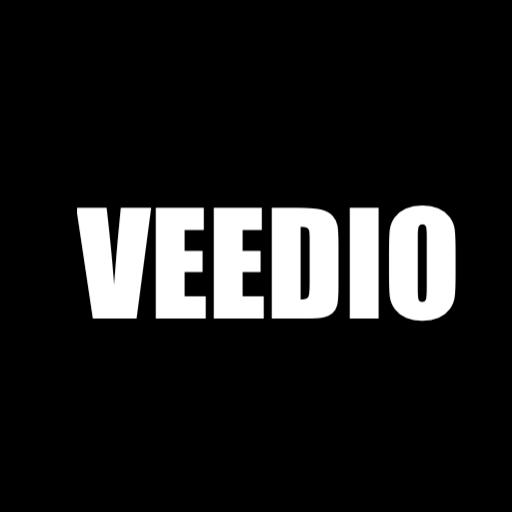VEEDIO API Overview
At VEEDIO, we empower developers to integrate our AI-driven video creation capabilities into their own applications with ease. Our robust APIs provide seamless access to VEEDIO’s powerful features, enabling you to automate video generation, customization, and processing directly from your code.
To get started, users must generate an [API Key] in their personal dashboard, which will be required to authenticate all API requests.

Our API suite is designed to be flexible, efficient, and easy to use, providing you with all the tools necessary to enhance your applications with advanced video capabilities.
Below is a detailed description of our available API calls, each accessible via the base URL https://api.veedio.org.
API Calls
1. Generate Video
- Endpoint:
/video/generate - Method: POST
- Parameters:
text(string, required): The text prompt for video generation.style(string, optional): The desired video style (e.g., “Pixar”, “Anime”).duration(integer, optional): Length of the video in seconds.resolution(string, optional): Video resolution (e.g., “720p”, “1080p”).
2. Enhance Video
- Endpoint:
/video/enhance - Method: POST
- Parameters:
video_id(string, required): The ID of the video to enhance.upscale(boolean, optional): Whether to upscale the video.filters(array, optional): List of filters to apply (e.g., [“sharpen”, “vibrance”]).
3. Add Audio to Video
- Endpoint:
/video/audio/add - Method: POST
- Parameters:
video_id(string, required): The ID of the video to add audio to.audio_file(file, required): The audio file to upload.sync(boolean, optional): Whether to sync the audio to the video timing.
4. Get Video Status
- Endpoint:
/video/status - Method: GET
- Parameters:
video_id(string, required): The ID of the video to check the status of.
5. Delete Video
- Endpoint:
/video/delete - Method: DELETE
- Parameters:
video_id(string, required): The ID of the video to delete.
6. List User Videos
- Endpoint:
/user/videos - Method: GET
- Parameters:
user_id(string, required): The ID of the user whose videos you want to list.limit(integer, optional): The number of videos to return.
7. Update Video Metadata
- Endpoint:
/video/metadata/update - Method: PUT
- Parameters:
video_id(string, required): The ID of the video to update.metadata(object, required): A JSON object containing the metadata fields to update.
8. Create Thumbnail
- Endpoint:
/video/thumbnail/create - Method: POST
- Parameters:
video_id(string, required): The ID of the video for which to create a thumbnail.timecode(string, optional): Timecode at which to capture the thumbnail (e.g., “00:01:30”).
9. Generate GIF
- Endpoint:
/video/gif/generate - Method: POST
- Parameters:
video_id(string, required): The ID of the video from which to generate the GIF.start_time(string, required): Start time for the GIF (e.g., “00:00:10”).duration(integer, required): Length of the GIF in seconds.
10. Add Subtitle to Video
- Endpoint:
/video/subtitle/add - Method: POST
- Parameters:
video_id(string, required): The ID of the video to which you want to add subtitles.subtitle_file(file, required): The subtitle file (SRT format).language(string, optional): Language code for the subtitles (e.g., “en”, “es”).
11. Search Videos
- Endpoint:
/video/search - Method: GET
- Parameters:
query(string, required): Search term to find relevant videos.user_id(string, optional): The ID of the user whose videos to search.limit(integer, optional): The maximum number of videos to return.
12. Generate Video Summary
- Endpoint:
/video/summary/generate - Method: POST
- Parameters:
video_id(string, required): The ID of the video to summarize.length(integer, optional): Desired length of the summary in seconds.
13. Apply Watermark
- Endpoint:
/video/watermark/apply - Method: POST
- Parameters:
video_id(string, required): The ID of the video to watermark.watermark_file(file, required): The watermark image file.position(string, optional): Position of the watermark (e.g., “top-right”, “bottom-left”).
14. Render Video
- Endpoint:
/video/render - Method: POST
- Parameters:
project_id(string, required): The ID of the project to render.format(string, required): Desired output format (e.g., “mp4”, “avi”).resolution(string, optional): Output resolution (e.g., “1080p”, “4K”).
15. Export Project
- Endpoint:
/project/export - Method: POST
- Parameters:
project_id(string, required): The ID of the project to export.export_format(string, required): Format for export (e.g., “json”, “xml”).include_assets(boolean, optional): Whether to include video and audio assets in the export.
Coming Soon: SDKs for JavaScript and Python
We’re excited to announce that we are currently working on JavaScript and Python SDKs that will fully incorporate this API list. These SDKs will streamline the integration process, making it even easier to leverage VEEDIO’s powerful video capabilities in your own applications. Stay tuned for updates on their release in our Blog!
